What is the UK’s hydrogen strategy for H2 vehicles?
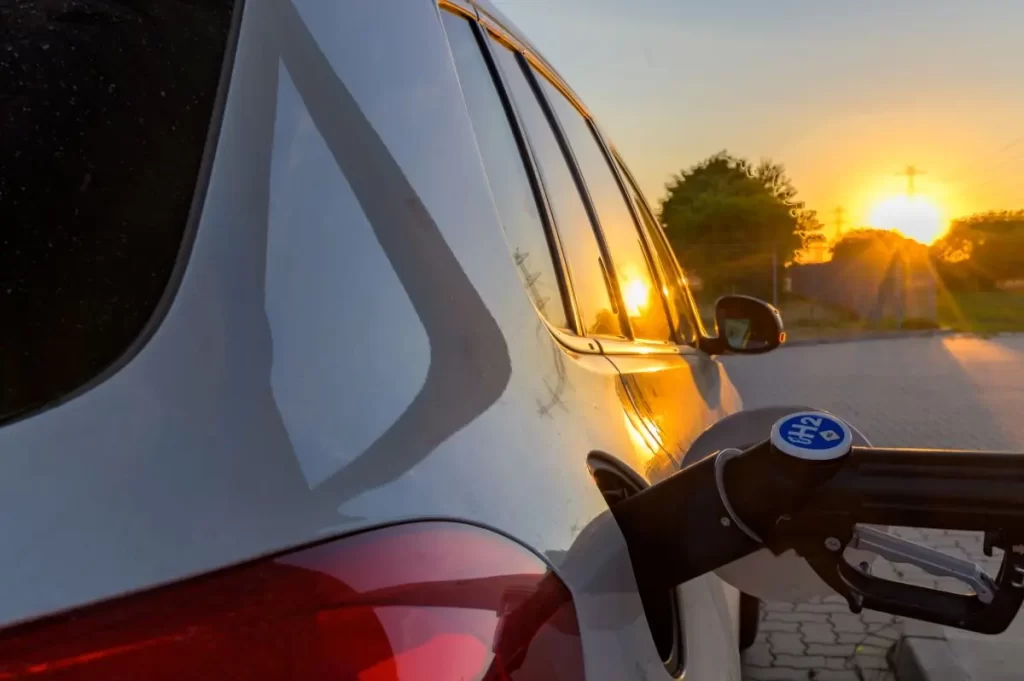
Just weeks ago, news emerged that the German government would likely be backing a €20 billion bid to build a network of hydrogen pipes across the country to solve its “chicken-and-egg” hydrogen dilemma. The UK faces the same problem.
In a previous article, we explained that hydrogen cars aren’t being purchased because the infrastructure isn’t in place to make owning a hydrogen car worth it. Likewise, the infrastructure isn’t being upgraded to facilitate hydrogen vehicles because the demand for hydrogen isn’t there.
It’s a catch-22, one that can really only be solved through government incentives and funding.
Thankfully, the UK government are working hard to make hydrogen a major part of their goal to reach net zero by 2050, which will help build the infrastructure needed for hydrogen vehicles.
An overview of the hydrogen strategy in the UK
In 2021, the government published their UK hydrogen strategy, and in 2022, it published an update. These documents outlined the case for low-carbon hydrogen, the country’s roadmap for getting there, and how this will feed into the wider economy.
The strategy’s overarching goals
Whilst the original publication’s main aim was to produce at least 5 gigawatts (GW) of low carbon hydrogen production capacity by 2030, in April 2022, they doubled this ambition to 10GW by 2030, 50% of which would be “green hydrogen”. This is the most environmentally friendly way of creating hydrogen as it uses excess electricity from green energy sources like wind and solar power to create H2.
The government’s goals are pretty bold, especially when you consider that we only produce around 700,000 tonnes of hydrogen per year. And most of what’s already produced is “grey hydrogen”. This is one of the least environmentally friendly methods of creating the energy source as it’s made from fossil fuels and produces carbon dioxide (CO2) which is then released into the atmosphere.
The good news is that there are quite a few projects in various stages of completion that the government has funded to help achieve this goal, including many in the transport sector.
What kind of infrastructure needs to be in place before hydrogen vehicles can become mainstream?
The main issues for hydrogen are that:
Hydrogen isn’t being produced in high enough quantities to ensure a steady supply of the fuel for vehicles
There aren’t enough fuelling stations across the UK
It’s difficult to transport hydrogen, especially in large amounts
The UK isn’t trained in green skills, which could be problematic when it comes to servicing the vehicles
What has the government done to create the infrastructure needed for hydrogen?
The government has developed several projects to help foster the growth of hydrogen – both in transport and in other industries. This includes creating “hydrogen hubs” across the country, which aim to transform areas so they produce and run on H2.
Tees Valley Hydrogen Transport Hub project
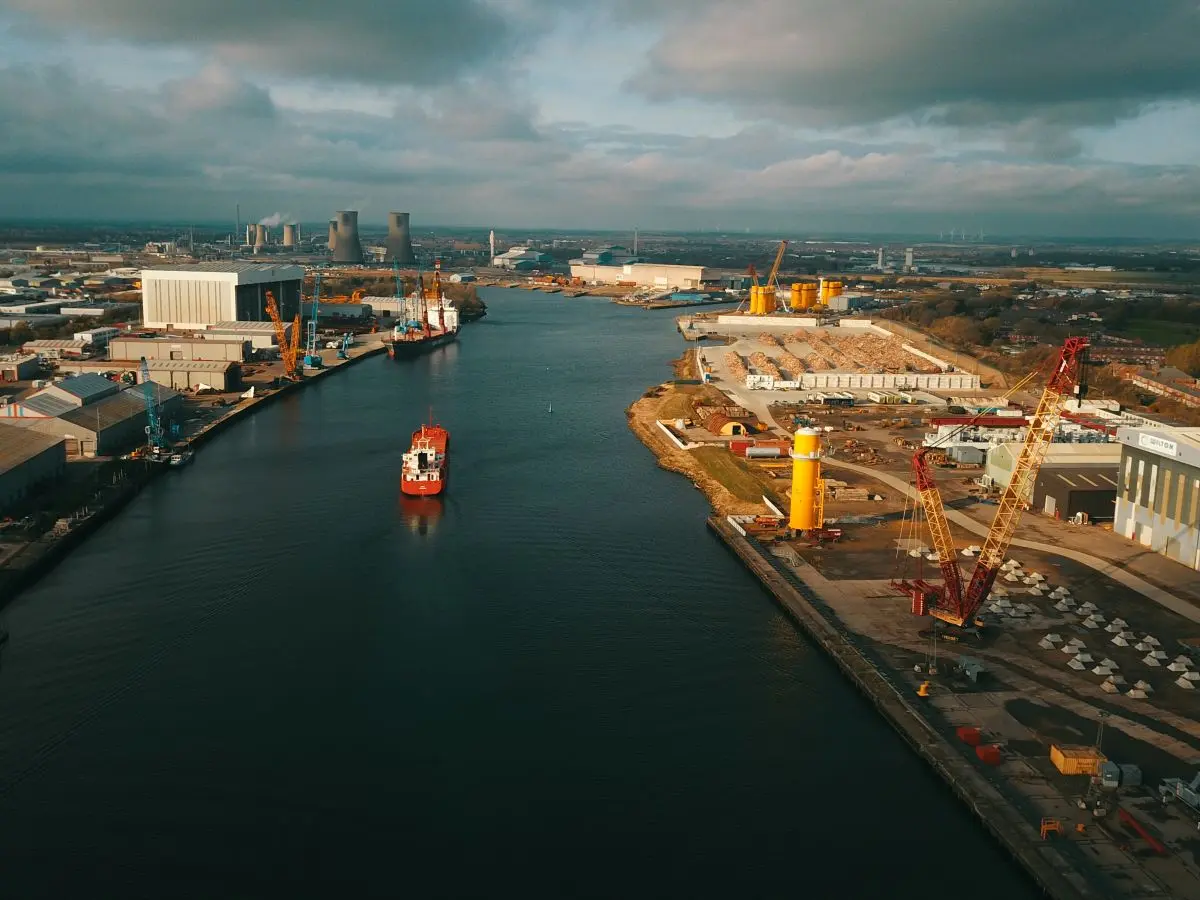
Perhaps most notable is the Tees Valley Hydrogen Transport Hub, which has been set up to support trial projects that kickstart hydrogen transport activity in the North East of England. Tees Valley, otherwise known as Teesside, has been chosen as one of the first and largest hydrogen hubs in the UK.
Teesside’s location is well suited to this as it has access to a port, airport, and important trunk roads. The region also produces about half of the country’s current hydrogen output, making it well placed to expand on existing infrastructure rather than starting completely from scratch.
The plan for hydrogen in Tees Valley
The Mayor of Tees Valley, Ben Houchen, estimates that the region could produce 2.5GW of hydrogen by 2030 – a quarter of the government’s 10GW target – and become “part of the UK’s net zero energy engine room”.
The project is both producing H2 and using it to decarbonise a number of industries in the region. Its aims include:
Blending 20% hydrogen into the natural gas grid to serve homes and businesses, then increasing this to 100% hydrogen once trials have been completed
Running hydrogen trains on the Tees Valley line, with the vision of expanding this further afield
Producing sustainable aviation fuel (SAF) from green hydrogen and waste CO2 to power planes at Teesside International Airport
Creating fleets of hydrogen buses and public sector vehicles
Adapting Teesside Freeport into a green port hub by using hydrogen infrastructure and decarbonising shipping
Exporting excess hydrogen to meet demand in other areas, including to Europe via ships, as well as to other parts of the UK like the Humber region, Cumbria (connected via East Coast Hydrogen), and Scotland
Aberdeen Hydrogen Hub

The Aberdeen Hydrogen Hub is also being spearheaded by BP and Aberdeen City Council. Its aim is to deliver a scalable green hydrogen production, storage and distribution facility in the city which is powered by a purpose-built solar farm.
Whilst the project has faced delays, it was given the green light in July 2024. Work on the hub will be split into phases, with the first phase focused on building a hydrogen refuelling facility for buses and trucks. The plant should produce enough hydrogen to fuel 25 buses and around 25 other fleet vehicles.
In phase two, hydrogen production will be scaled up by almost four times and will be used to supply green hydrogen to road, rail, freight and marine.
The project is aiming to start production in 2025 and market hydrogen for use in road transport fleets (including buses, trucks, vans and cars) to grow demand.
Hydrogen production
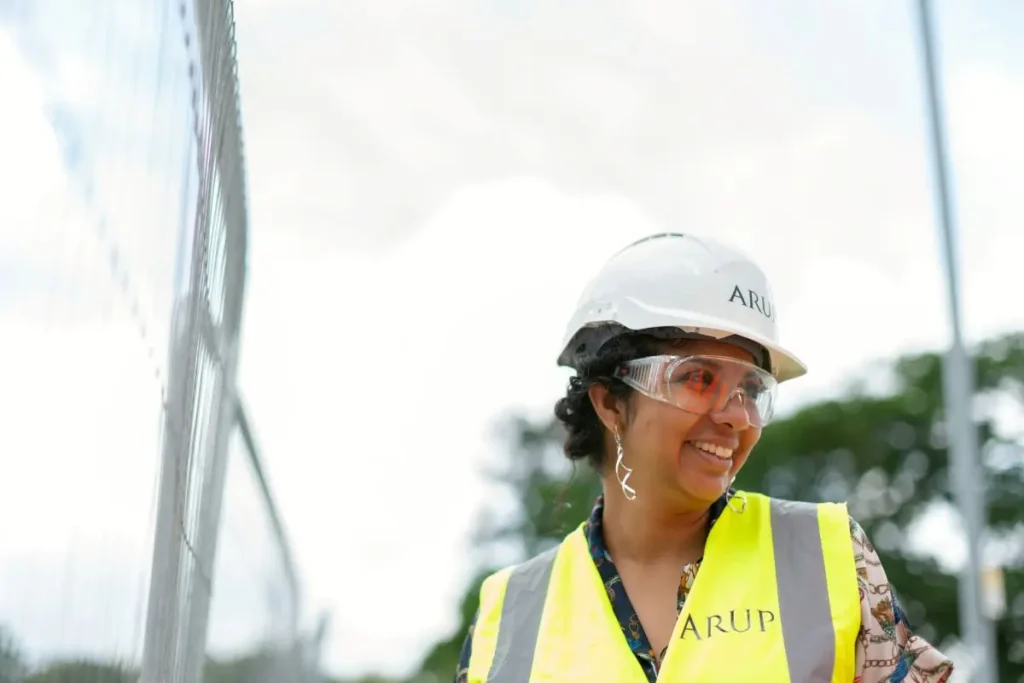
Multiple projects from BP, Kellas Midstream and SSE Thermal are being undertaken to scale up hydrogen production in the country, mainly in the Tees Valley and Aberdeen area.
This includes H2 Teesside – to produce blue hydrogen – HyGreen Teesside and phase one of the Aberdeen Hydrogen Hub – to produce green hydrogen – and H2NorthEast, the Northern Endurance Partnership and Net Zero Teesside, all of which aim to create carbon capture, utilisation and storage (CCUS) facilities.
Funding to roll out hundreds of zero-emission HGVs and retrofit buses
A number of trials have been funded by the UK government to help decarbonise transport industries that are difficult to electrify. This includes commercial heavy goods vehicles (HGVs), which tend to travel long distances and therefore cannot depend fully on electricity to run, which travel shorter distances and take a long time to charge.
On that front, hydrogen-electric vehicle manufacturer Hydrogen Vehicle Systems (HVS) has teamed up with a supermarket chain to develop and trial hydrogen HGVs.
Elsewhere, work has started on decarbonising buses in the region. In a project called HYRBUS (HYdrogen fuel-cell Retrofit kit for BUS), Ricardo and Stagecoach are creating a hydrogen fuel-cell powertrain prototype solution that could be retrofitted to existing diesel buses.
The project has already seen the first double-decker bus be retrofitted, and trials of the bus were carried out on the roads in Tees Valley and Brighton and Hove.
In 2022, the government also announced that they would invest £200 million to launch the world’s largest fleet of zero emission HGVs. The project will deliver:
Refuelling stations
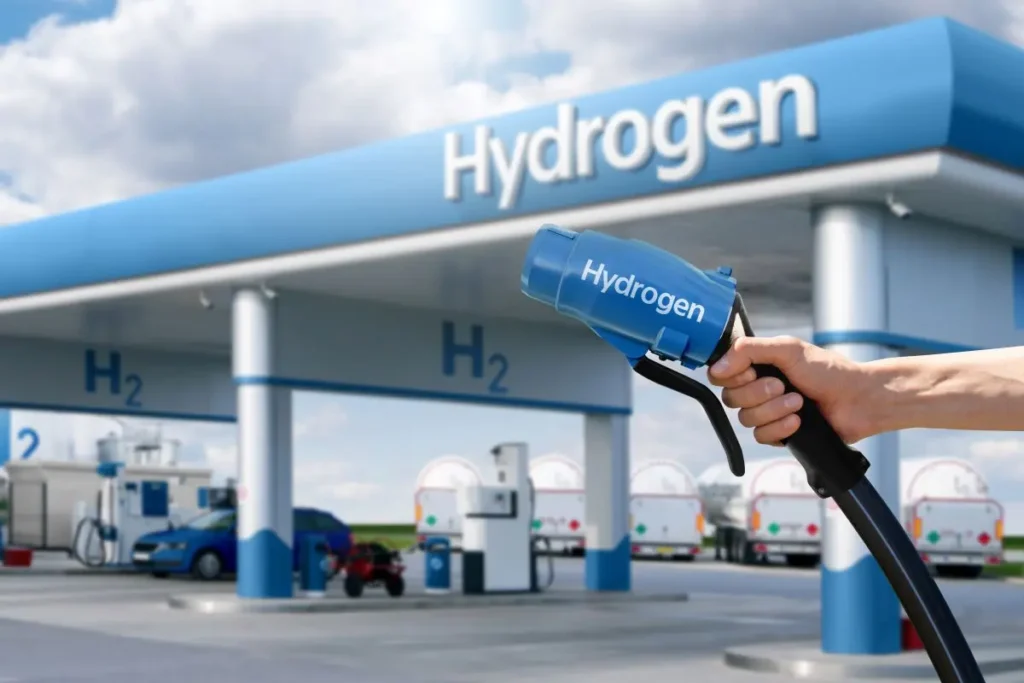
Research conducted by Hydrogen UK earlier this year suggests that around 200 hydrogen refuelling stations would be needed by 2030 to create a minimum viable network for hydrogen.
Considering there are currently around 11 hydrogen refuelling stations across the UK, major investment is needed in this area to ensure the infrastructure is in place to support hydrogen-fuelled vehicles.
Thankfully, the government is investing heavily in this area and has a plan to create a nationwide network of hydrogen refuelling stations.
Element 2 won a considerable grant to start building more refuelling stations, with four publicly available sites set to be added in the North East of England as part of the Tees Valley Hydrogen Transport Hub.
Exolum has also been given £2 million in funding to construct a green hydrogen production plant and refuelling station in the Riverside terminal in Stockton-on-Tees, near Middlesbrough town centre in Tees Valley. The green hydrogen produced in the plant will provide a capacity of 1.5 tonnes per day to the refuelling station, with excess hydrogen sent to other customers in the region.
Building a hydrogen transportation system
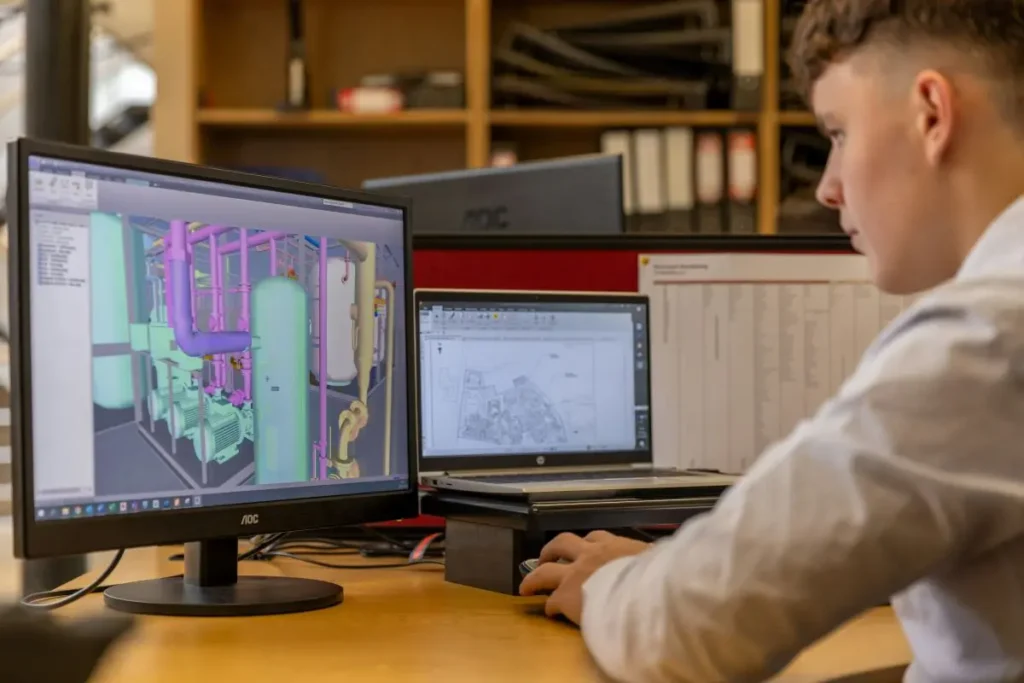
A question remains as to how hydrogen can be transported across the UK so it can be used at refuelling stations. When hydrogen cannot be produced on-site, it is usually transported by road using hydrogen trailers. These will provide a way of hauling hydrogen over the next few years while the pipeline infrastructure is still being created.
It’s likely that the UK will look to repurpose existing pipelines so they can carry H2 in the future. This would be a much more cost-effective solution than building pipelines from scratch.
ITM Power and BOC are currently working on creating the refuelling infrastructure needed to supply H2 to vehicles, and, as a stopgap solution, Element 2 and Fuel Cell Systems have built and deployed a number of portable hydrogen refuelling stations known as HyQubes to hydrogen hubs across the country.
These stations can store and supply H2 to hydrogen-powered vehicles. They can be deployed anywhere in the country and can provide hydrogen to vehicles even before the transport network has been adapted to hydrogen. This essentially helps solve the “chicken-and-egg” problem that the UK is currently facing.
Upskilling the workforce with hydrogen training

In the Hydrogen Sector Development Action Plan created in 2022, the government explored how hydrogen skills could be taught going forward. They explained that: “many of the skills needed for the hydrogen economy already exist in the UK.”
Skills like engineering, construction and maintenance, and health and safety are already “part of the rich portfolio of jobs across high-carbon sectors such as oil and gas, chemicals and wider engineering sectors.”
This means that, as these sectors make the transition to net zero and demand for oil and gas in particular shrinks, workers with existing skills in the market could apply and build on these skills in the growing hydrogen economy.
The paper also acknowledged that, given how early we are in creating a hydrogen economy, much of the workforce that will work with hydrogen will be made up of young people currently in the education system.

Whilst green skills aren’t currently a major part of the curriculum, discussions around how to go about doing this have already started. For instance, the government recently co-hosted the first International Green Skills Conference to discuss how to support education providers and businesses to become part of the green transition.
And, in its Net Zero Strategy, plans were also outlined around reforming the skills system so that training providers, employers and learners are supported and equipped to help deliver the transition to net zero.
This includes continuing to roll out T Levels (technical-based qualifications), aligning apprenticeships and technical education to net-zero objectives, and more.
In the shorter term, the government has asked applicants for the 2022 hydrogen business model (HBM) and Net Zero Hydrogen Fund (NZHF): Electrolytic Allocation Round to provide evidence that shows their projects are investing in training to develop skills in hydrogen.
In Tees Valley specifically, £300,000 of government funding will also be used to run a competition for Tees Valley colleges and training institutions to purchase hydrogen training equipment to upskill the local workforce.
Further to this, BP has invested in future green skills by providing Teesside Clean Energy Technician Scholarships to 20 young people who have a particular interest in the clean energy sector and are looking to study engineering.
The company has also placed partners from different countries in each of their projects, ensuring that the knowledge they gain can be shared in other parts of the world.
Will this be effective in feeding into the hydrogen car industry?

Although it is still early days, the fact that the government is funding so many projects in the production and use of hydrogen for transport is positive.
The hydrogen economy is still in its infancy, but given the number of areas that are difficult to electrify – especially in transport – we’re hopeful that production and utilisation will start to snowball as projects progress.
Hydrogen car insurance with Adrian Flux
We’ve been insuring classic cars, modified cars, and all other types of unique vehicles for over 50 years, and we know the world is changing. With the ban on buying new petrol and diesel cars approaching in 2035, we’re championing hydrogen as it accurately maintains the feel and sound of a traditional petrol or diesel engine.
We’re one of the very few insurance companies offering hydrogen car insurance in the UK. If you’re the proud owner of the Mirai, the Nexo SUV, or a hydrogen vehicle imported from overseas, we can help you get the right cover for your unique car.
Call us for a quote on 0800 369 8590 or book a callback at a time that suits you.






